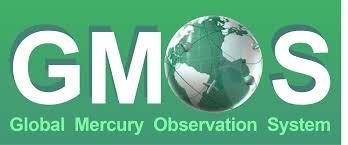The GMOS showcase


GEOSS at work for Science &Technology: the GMOS showcase
Introduction
Improved information on mercury emissions have contributed to further progress the assessment of the regional impacts of mercury on terrestrial and aquatic environments. Major international activities aimed to assess source-receptor relationships for mercury in the environment have been carried out within international conventions and programmes (i.e., UNEP, UNECE-LRTAP, OSPAR, HELCOM, ACAPs, AMAP) and projects (i.e., MAMCS, AME, MOE, MERCYMS, ESPREME, GMOS). In its 2009 session the UNEP Governing Council agreed on the need to develop a global legally binding instrument for mercury, and since the International Negotiation Committee (INC) with support of the partnership areas has started a process of elaboration of the LBI that will be tabled to the next GC in 2013. Following the growing interest of the scientific and environmental policy community, in 2008 the GEO approved as part of its 2009-2011 Work Plan a new subtask (HE-09-02d) aimed to build a global monitoring network for mercury. As outcome of this extraordinary international effort to control the level of mercury in different ecosystems, in 2010 the European Commission approved for funding the Global Mercury Observation System (GMOS, www.gmos.eu) project which involves nearly 30 partners from all over the world. GMOS is aimed to develop a coordinated global observation system for mercury, including ground-based stations at high altitude and sea level locations, ad-hoc oceanographic cruises over major oceans and seas and a tropospheric program for measuring mercury concentration in the free troposphere. GMOS will provide high quality data for the validation and application of regional and global scale atmospheric models to give a firm basis for future policy development and implementation. In the meantime the GEO revised its work plan (2012-2015) and the goal of developing a Global Mercury Observation System was included as part (C1) of the Task HE-02 “Tracking Pollutants”. GMOS is currently supporting the achievement of goals of the UNEP Mercury Programme, the GEO (2012-2015) Work Plan, and the Task Force of the Hemispheric Transport of Air Pollutants (HTAP) of the UNECE-LRTAP convention.
Expected achievements by 2015
Outputs and Activities:
The foreseen outputs and activities of the Task are:
- Observational data provided by a globally coordinated observation system able to quantify the concentrations of mercury species in the atmosphere and marine ecosystems;
- A spatial data infrastructure (SDI) for GMOS that will allow the sharing of observational data and modelling systems;
- Data bases related to emissions of mercury from natural processes and sources as well as form anthropogenic sources. These data sets provided through the SDI will support the activities of NGOs, Stakeholders and policymakers in developing best practices and future strategies for controlling the impact of mercury pollution on Earth;
- Advanced and innovative approaches for upgrading and expanding Earth observations;
- A growing capacity of individuals, institutions and infrastructures to benefit from and contribute to GEOSS, particularly in developing countries.
Infrastructure
S&T components of relevant interest are:
- an international observation system, which provides a consistent and standardized set of long-term data on ambient concentrations and deposition fluxes of atmospheric mercury in its various forms;
- ad-hoc off-shore investigations to assess gas exchange of mercury between the surface waters and the atmosphere;
- the development of an interoperable system to facilitate data integration, data re-use, and data exchange within and beyond the GMOS by means international standards for data and spatial schema’s (ISO19107, ISO14825), for metadata (ISO19115:2003, ISO/DTS19139:2005, ISO15836) and for services (WMS 1.1.1, WFS 1.0, SLD 1.0, GML 3.1);
- dedicated aircraft studies with ongoing project (i.e. CARIBIC, (NOMADSS)., ETMEP) and vertical profiling and plume identification/tracking with improved temporal and spatial vertical profile of mercury species concentration.
Key Outputs
Development of an SDI with a classical three layer architecture: a Data Storage Layer (DSL), connected to the Business Logic Layer (BLL) hosted in a Tomcat Server which is linked to the Application Layer (AL).
The core of the system will be represented by the DBMS, which will store vector-type information and functional data. The DBMS will represent the DSL in the SDI architecture, and stores metadata and geographic data in separate databases to maintain a different logic structure for each type of data. Additional databases will be dedicated to functional tasks and to information coming from web sensors.
In the BLL, server components will be plugged to perform the system functionality like metadata management, data and map creation, and data dissemination.
The AL will hold a dedicated viewer for geographic information of the SDI.
Key Activities
The following activities will help the infrastructure implementation:
- Design the SDI architecture;
- Implement the SDI;
- Collect historical information;
- Make a quality control of collected datasets and define their uncertainty where possible;
- Upload datasets into the database;
- Test the system;
- Deliver services.
Institutions and Development
GMOS will extent the availability, use, and application of environmental information in order to improve monitoring of the state of the Earth, in relation to mercury pollution and its impact on humans and ecosystems, increase understanding of Earth processes, and enhance prediction of the behaviour of the Earth system. The C1 task will meet the need, as quoted in GEOSS strategic targets, for timely, quality long-term global information as a basis for sound decision making, and will enhance delivery of benefits to society in the following initial areas:
- Understanding environmental factors affecting human health and well-being;
- Improving the management and protection of terrestrial, coastal, and marine ecosystems.
Data Sharing
Once the system will be established, the following principles of data sharing would be adopted by C1-GMOS members:
- Full and open exchange of data, metadata, and products shared within GMOS, recognizing relevant international instruments and national policies and legislation;
- All shared data, metadata, and products will be made available with minimum time delay and where possible without additional cost;
- Encourage share and reuse of data, metadata, and products for research, education and policy decisions.
Key Outputs
GMOS Data sharing principles adopted by participants.
Key Activities
- Discuss within the GMOS community on data sharing principles;
- Prepare a technical report on GMOS Data Sharing principles;
- Provide the community with Standard Operating procedures for the global monitoring network;
- Register components and procedures in the GEOSS portal.
Capacity Building
As the C1-GMOS activity is based on a global network for operational monitoring and capacity building, including advanced centres from both developed and developing countries, its activity will be substantially improved by GEOSS because of a coordinate approach to data measurement, archive, discovery and release.
Significant Science and Technology (S&T) issues are addressed in GMOS. They range from in-situ, shipborne and airborne observing products to climate/chemical atmosphere modelling and assimilation data; from development of advanced sensor to interoperable systems.
It is foreseen that the contribution of GMOS to the overarching goals of GEOSS will be substantial as well as technologies learned within the GEOSS community will strengthen GMOS objectives.
Key Outputs
This coordinated approach will ensure:
- increase of synergies and effectiveness of national and international capacity building programmes related to mercury;
- engagement of resource providers in the GEO capacity building process;
- enhanced integration of mature Earth observation-based information systems into day-by-day enduser practices including decision making, management processes and planning for all Societal Benefit Areas.
Key Activities
Main activities will be related to:
- Networking activities that specifically build individual, institutional and infrastructure capacity related to GMOS;
- Leveraging resources for Earth observation capacity building efforts;
- Uptake Increased use of Earth observation in policy and decision making;
- Enhanced participation in GEO and GEOSS.
Science & Technology
This Task, will ensure full interaction, engagement and acknowledgement of GMOS communities into GEOSS. This S&T community is aimed to collect information, to better predict the biogeochemical mercury cycle, to develop emissions scenarios and define impact on human health and environment.
Key Outputs
- Improved and new instrumentation and system design for in-situ, airborne, and space-based observation, benefiting from advances in S&T;
- Increased accessibility of global sets of scientific data necessary for improved Earth System modelling in the different GEO Societal Benefit Areas.
Key Activities
- Provide to GMOS community demonstrative of well practices in support of GEOSS;
- Establish a “GEO label” for GMOS data to recognise the scientific relevance, quality, acceptance and societal needs for activities;
- Build awareness of GEO and GEOSS in the GMOS S&T communities, within the scope of the GEOSS development;
- Enhance registration of scientific data sets as an important indicator for potential contributors from the GMOS community;
- Identify key partners, which could contribute to GEOSS and also benefit from improved observational means, products and services and might therefore support certain S&T development;
- Catalyze research and developing funding to help engaging the GMOS S&T communities in the implementation of the GEOSS.
User Engagement
The GMOS Project includes 23 partners from 18 countries and 8 external partners from on-going international networks and programs (e.g. NADP, CAMnet). The Policy Advisory Board (PAB) includes Representatives of major organizations that are in charge to policy development aimed to reduce the impact of mercury contaminations on human health (i.e UNEP, UNECE-LRTAP, GEO, WHO, EC). To this end linkages across Societal Benefit Areas would be of value providing wider opportunities for synergistic collaboration.
Key Outputs
- Establishment of an agreed core set of essential chemical, climatic, environmental, and socio-economic variables needed to provide data, metadata and products in support of all GEOSS Societal Benefit Areas;
- Involvement of GMOS users in: reviewing and assessing requirements for data, products and services; creating appropriate mechanisms for coordinating user requirements; utilizing data/information delivery systems; and capturing user feedback on an ongoing basis across Societal Benefit Areas;
- Increased use of geo-spatial data in all Societal Benefit Areas and in particular in countries with highest environmental treats.
Key Activities
- Developing a framework to identify and implement linkages across Societal Benefit Areas, thereby providing wider opportunities for synergistic collaboration;
- Active partnerships among and within Societal Benefit Areas, promoting synergy among GEO projects and activities through the concept of user communities of practice;
- Increased development of data and information, with special emphasis on socio-economic applications and the development of methods, for models and tools required to make best use of these data in science and technology development and decision-making;
- Use, enhanced by a user-oriented GEOSS Common Infrastructure, of GMOS products and services across all Societal Benefit Areas of GEOSS.
Social Benefits
Key Outputs
- advance the application of observation, monitoring and forecasting systems to health decision-making processes;
- foster the use of established and emerging observation systems in operational health-related applications for air and water quality related to mercury, and develop associated products such as forecasts and alerts compliant with the Common Alerting Protocol (CAP);
- include efforts to examine terrestrial, freshwater, and marine (ocean) ecosystems and their services, to establish causality between changes in flora, fauna and other factors affecting the emergence of mercury pollution;
- facilitate the integration of mercury databases and emerging information products with public health data, socioeconomic data, and epidemiological information needed in decision support systems for health care planning and delivery;
- develop best practices for energy production under mercury-free scenarios;
- develop and promulgate wider availability of methodologies to understand interactions between mercury pollution and ecosystems;
- develop best practices for food production under mercury-free scenarios.
Key Activities
- Provide access to improved environmental information and tools to support the global community of human health and environment experts;
- Increase use of environmental information and tools to support decision making in mercury emission scenarios;
- Provide prediction of potential hazards of fossil fuel use for energy production;
- Provide, environmental, economic and societal impact assessments of mercury release into the environment;
- Supply mapping of anthropogenic and natural source emissions;
- Provide increased knowledge of mercury bioaccumulation and biomagnifications through the marine ecosystem;
- Expand monitoring of pesticides and fertilizer containing mercury;
- Improve collaboration and coordination on the use and applications of Earth observations data from related Societal Benefits Areas.
Resources available for implementation
- Global Mercury Observation System (GMOS), funding period from 2010-2015;
- Italian Polar Research Program (PNRA), funding from 2010-2012;
- French Polar Program;
- AMNet is an overarching program, supported by several federal agencies (e.g., EPA, NOAA, USGS, NPS, FWS), states, academic institutions, and others;
- CARIBIC funded by the Max Planck Society, The Helmholtz Association, and the Leibniz Association;
- NOMADSS/SAS (Nitrogen, Oxidants, Mercury and Aerosol: Distributions, Sources and Sinks). project, University of Washington-Bothel;
- Ministry of the Environment, Government of Japan, supports the operation of several monitoring sites in Japan, in particular at Okinawa site, and additional activities related to mercury research;
- Government of Canada, supports the operation of several sites in Canada including the Alert site that is specifically part of GMOS;
- Ministry of Science and Technology (MOST) of the PR China, supports the operation of several sites in China;
- German Environmental Protection Agency (UBA), supports the operation of several sites in Germany, in particular at Waldhof Master Site.
Supporting documents and links
Check the Poster presented at the GEO VIII exhibition.
Partecipants
A worldwide community made by scientists from leading universities and research institutions recognised as experts on different aspects related to emissions, monitoring and modelling mercury in the atmosphere and other environmental compartments support the implementation of this task. The following not exhaustive list is under review and should be integrated with new experts.
- Institute of Atmospheric Pollution Research (CNR-IIA), ITALY – COORDINATORE
- National Institute for Environmental Studies, JAPAN
- DEADP, SOUTH AFRICA
- US-EPA, USA
- ADEK-INTEC, SURINAME
- NIAES, CAPO VERDE
- UNCo – INIBIOMA CONICET, ARGENTINA
- JRC, BELGIUM
- APLBA, BRAZIL
- JSI, SLOVENIA
- Environment Canada, CANADA
- Institute of Geochemistry, CAS, CHINA
- Tsinghua University, CHINA
- AU-NERI, DENMARK
- IFREMER, FRANCE
- UJF Aurélien, FRANCE
- HZG, GERMANY
- MPI-Chemistry in Mainz, GERMANY
- Anna University Chennai, INDIA
- ISPRA, ITALY
- University of Venice, ITALY
- NILU, NORWAY
- Meteorological Synthesizing Centre – East of EMEP, RUSSIAN FEDERATION
- SPbSU, RUSSIAN FEDERATION
- SAWS, RUSSIAN FEDERATION
- Goteborgs Universitet, SWEDEN
- IVL, SWEDEN
- University of York, UK
- EPRI, USA
- University of Connecticut, USA
- University of Michigan, USA
- University of Washington, USA
- University of Harvard, USA

Nicola Pirrone
Project Coordinator - Point of Contact
Working group
Noriyuki Suzuki
NIES
Joy Leaner
DEAPD
Stan Durkee
US-EPA
David Schmeltz
US-EPA
Dennis Wip
ADEK-INTEC
Ester Brito
NIAES
Maria Dieguez
UNCo - INIBIOMA CONICET
Bernd Gawlik
JRC
Paulo Artaxo
APLBA
Milena Horvat
JSI
Pierrette Blanchard
Environment Canada
Xinbin Feng
CAS
Sergio Cinnirella
CNR-IIA
Ian M. Hedgecock
CNR-IIA
Francesca Sprovieri
CNR-IIA
Jiming Hao
Tsinghua Uni.
Henrik Skov
AU-NERI
Daniel Cossa
IFREMER
Aurelien Dommergue
UJF
Ralf Ebinghaus
HZG
Carl Brenninkmeijer
MPI
Mainz Franz Slemr
MPI
Chennai R. Ramesh
Anna Uni. Chennai
Mari Belli
ISPRA
Anna Maria Caricchia
ISPRA
Patrizia Bonanni
ISPRA
Carlo Barbante
UNIVE
Atis Skudra
IAPS
Jozef M. Pacyna
NILU
Oleg Travnikov
East of EMEP
Nikolay Mashyanov
SPbSU
Ernst-Günther Brunke
SAWS
Katarina Gardfeldt
Goteborg Uni.
John Munthe
IVL
Katie Read
Uni. of York
Leonard Levin
EPRI
Robert Mason
Uni. of Connecticut
Timothy Dvonch
Uni. of Michigan
Lyatt Jaegle
Uni. of Washington
Elsie Sunderland
Uni. of Harvard
